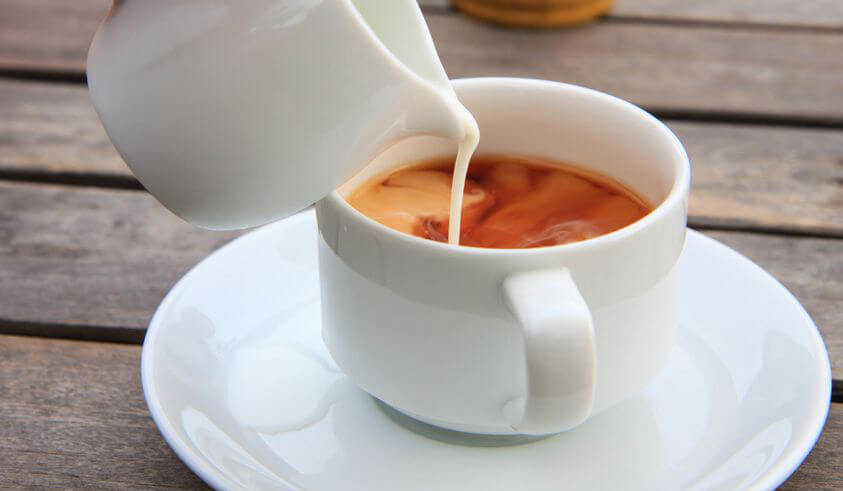
There are several theories as to when we started to put a splash of milk into our cup of tea. Some believe the British seagoing merchants brought the tradition back to Europe from seeing tribes such as Mongols in northern China adding a thick and sweet variety of yak’s butter to their brew of tea. The Chinese had been lacing their tea with dairy products for centuries, considered a covering of frothed milk over their tea so desirable they initiated milk frothing competitions, much like present day baristas vying over who can produce the most artistic looking cappuccino.
Although there is evidence it was used as early as the 1660s, milk was probably not commonly drunk with tea in Britain before the 1720s. It was around this date that black teas overtook green varieties in popularity, and the two developments were no doubt connected, as the black tea was more bitter than green. On a scientific note, black tea contains oxalic acid, which can disrupt the calcium flow in the body, and adding milk to black tea helps to counter this reaction.
In 1655, a Dutch traveller by the name of Jean Nieuhoff reported being served tea with milk at a banquet in Canton given by the Chinese Emperor Shunzhi. Nowadays we cannot perceive of delicate Chinese tea being drunk with milk.
In 1680, Madame de la Sabliere served tea with milk at her famous Paris salon. She is traditionally credited as introducing the custom to Europe, although as with most new trends, the zeitgeist had probably already been spreading. And for a good reason, as another theory is that milk started to be added to tea to prevent staining to fancy china cups, and that for the poor, milk had the added benefit of reducing the unpleasant bitter taste of some of the cheap teas.
But back to the pressing issue of Milk In First or Tea In First.
In the early days of tea-drinking, poorer quality cups could crack when piping hot tea was poured into them. Putting MILK IN FIRST helped to prevent this. When finer and stronger materials came into use, this was no longer necessary, so putting the MILK IN LAST remained a way of showing guests that one of course had the best quality china on one’s table.
Your preference for MIF or MIL became a social divider that had little to do with the taste of the tea. The writer and well-known elitist Evelyn Waugh endorsed the phrase, ‘He’s rather milk-in-first’ to refer to a lower-class person.
According to Fortnum & Mason in London, the well-known purveyor of teas, each order of pouring has its own benefits, and there is certainly a case for and against either way of doing it. If you are drinking a new and unfamiliar type of tea, it’s easier to judge the correct amount of milk to add once you have seen the strength and colour of the tea. However, scientifically speaking, putting the milk in your cup first, allows the fat content of the milk to emulsify differently when the tea is poured over it, which gives the tea a more even and creamier flavour.
However, one thing’s for sure: whether your preference is to drink your tea with a dash of milk or a slice of lemon, you cannot mix the two. Adding a slice of lemon to tea helps break down the tannins in the tea leaves. However, the citric acid contained in lemon causes milk protein to crystallise, forming small ‘crystals’ of milk in the tea. Not a particularly edifying sight to be seen in your tea cup.
